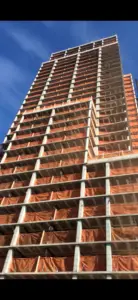Going hand and hand with mechanics liens are lien waivers. These are often used as receipts to go along with payment made on a project. They are essentially a document to provide proof of funds paid and they state that the receiving party waives any future lien rights related to the payment. While you may be familiar with them as part of the administrative details of being in the construction industry, there may be some important details you didn’t know. After all, if you’re signing away your rights to enforce payment, you need to know exactly what that means.

What is a Lien Waiver?
A lien waiver is a document from a construction provider that would have the right to file a mechanics lien given to the construction project or property owner. This document states that they waive future lien rights. These waivers can waive full rights on the entire project or just certain rights on a portion of the project for which payment has been received.
You want to pay particular attention to what the lien waiver covers to make sure it’s not too broad or vague. After all, you only want to waive when you’ve been paid. Generally, this means you sign either a conditional or an unconditional waiver. Unconditional waivers are generally reserved for the end of the project and are fully enforceable. Conditional waivers are used in the middle of the project and are only enforceable once the work outlined is complete and fully paid.
As a general practice, most contractors prefer conditional lien waivers. These waivers can be signed in advance and become fully enforceable once the work is complete and payment has been made. They are not enforceable if there is an issue that arises before those both sides are complete.
Will Filing a Mechanics Lien Work?

“You want to pay particular attention to what the lien waiver covers to make sure it’s not too broad or vague. After all, you only want to waive when you’ve been paid.”
The process
A lien waiver is a simple document that you give in exchange for payment. In some states, this form is standardized, so be sure to check that before creating a document on your own.
Contractors who are paying third parties often request signed lien waivers in return for payment. This lets them document and protect against any future liens that may be filed. For those receiving payment, it’s simply another administrative step in the process of getting paid. You sign one and send it to the contractor or property owner and they send you payment for work performed.
While it can seem a tedious process, it is still worth paying enough attention to in order to ensure you’re being protected, getting paid correctly, and not waiving any rights you shouldn’t.

WHY CHOOSE NLB?
WE GET YOU PAID!
Learn More About Mechanics Lien Compliance by State
Gain Access to Our Nationwide Mechanics Lien Construction Lawyers Network
Stay Updated On Legal Compliance Changes in Your State




